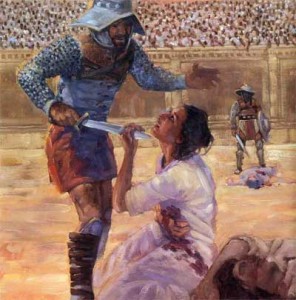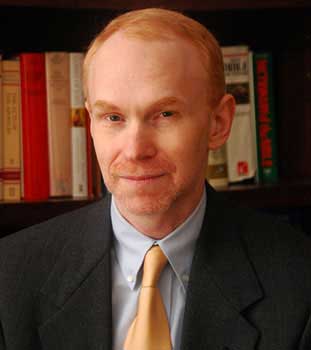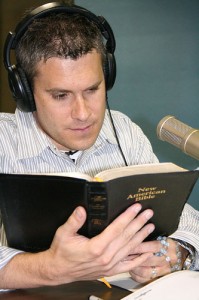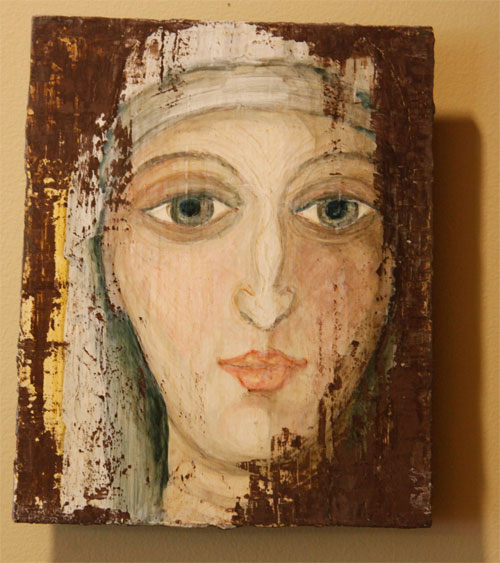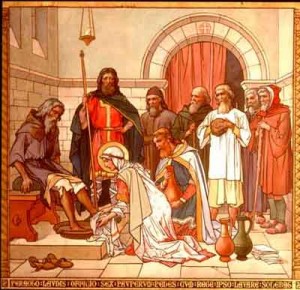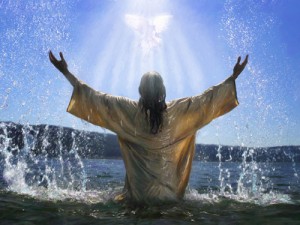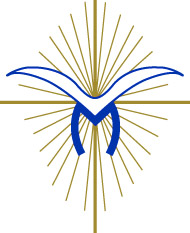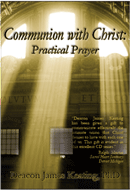[powerpress]
A blessing from St. Clare:
I, Clare, a handmaid of Christ, a little plant of our holy Father Francis, a sister and mother of you and the other Poor Sisters, although unworthy, ask our Lord Jesus Christ through His mercy and through the intercession of His most holy Mother Mary, of Blessed Michael the Archangel and all the holy angels of God, and of all His men and women saints, that the heavenly Father give you and confirm for you this most holy blessing in heaven and on earth. On earth, may He increase [His] grace and virtues among His servants and handmaids of His Church Militant. In heaven, may He exalt and glorify you in His Church Triumphant among all His men and women saints.
Always be lovers of God and your souls and the souls of your Sisters, and always be eager to observe what you have promised the Lord.
May the Lord be with you always and, wherever you are, may you be with Him always. Amen
Dear St. Clare,
As a young girl you imitated your mother’s love for the poor of your native Assisi.
Inspired by the preaching of St. Francis, who sang enthusiastically of His Lord Jesus and Lady Poverty, you gave your life to Jesus at nineteen years of age, allowing St. Francis to cut off your beautiful hair and invest you with the Franciscan habit.
All through your life you offered your great suffering for your Sisters, the Poor Clares, and the conversion of souls. You greatly aided St. Francis with his new order, carrying on his spirit in the Franciscans after his death.
Most of all you had a deep love of Jesus in the Most Blessed Sacrament, which fueled your vocation to love and care for the poor.
Please pray for me (mention your request) that I will seek to keep Jesus as my first love, as you did. Help me to grow in love of the Blessed Sacrament, to care for the poor, and to offer my whole life to God.
Heavenly Father, thank You for the gift of St. Clare. Through her intercession, please hear and answer my prayer, in the name of Jesus Your Son.
Amen.
For the complete novena visit the St. Clare Novena Discerning Hearts Page
Tags: catholic, catholic podcast, catholic prayer, cathollc spirituality, heaven, Jesus, love, mother, st. clare novena
This entry was posted on Sunday, August 10th, 2014 at 6:03 am
You can follow any responses to this entry through the RSS 2.0 feed.
[powerpress]Mike Aquilina offers the compelling story of the St. Perpetua and her great friend and sister in the faith, St. Felicity.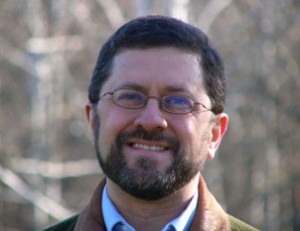
From CNA:
Saints Perpetua and Felicity were martyrs who died for the faith around the year 203.
St. Perpetua was a young, well-educated, noblewoman and mother living in the city of Carthage in North Africa. Her mother was a Christian and her father was a pagan. In terms of her faith, Perpetua followed the example of her mother. Despite the pleas of her father to deny her faith, Perpetua did the very opposite, and fearlessly proclaimed it. At the age of 22, she was imprisoned for her faith. While in prison she continued to care for her infant child and put up with the tortures designed to make her renounce her faith. Perpetua remained steadfast until the end. St. Perpetua was sacrificed at the games as a public spectacle for not renouncing her faith.
St. Felicity was a pregnant slave girl who was imprisoned with St. Perpetua. Little is known about the life of St. Felicity because, unlike Perpetua, she did not keep a diary of her life. After imprisonment and torture, Felicity was also condemned to die at the games. Only a few days before her execution, Felicity gave birth to a daughter who was secretly taken away to be cared for by some of the Faithful.
Tags: faith, mike aquilina, mother, perpetua
This entry was posted on Friday, March 7th, 2014 at 12:22 am
You can follow any responses to this entry through the RSS 2.0 feed.
[powerpress]
Reading 1 Gn 49:2, 8-10
“Assemble and listen, sons of Jacob,
listen to Israel, your father.“You, Judah, shall your brothers praise
–your hand on the neck of your enemies;
the sons of your father shall bow down to you.
Judah, like a lion’s whelp,
you have grown up on prey, my son.
He crouches like a lion recumbent,
the king of beasts–who would dare rouse him?
The scepter shall never depart from Judah,
or the mace from between his legs,
While tribute is brought to him,
and he receives the people’s homage.â€
Gospel Mt 1:1-17
the son of David, the son of Abraham.Abraham became the father of Isaac,
Isaac the father of Jacob,
Jacob the father of Judah and his brothers.
Judah became the father of Perez and Zerah,
whose mother was Tamar.
Perez became the father of Hezron,
Hezron the father of Ram,
Ram the father of Amminadab.
Amminadab became the father of Nahshon,
Nahshon the father of Salmon,
Salmon the father of Boaz,
whose mother was Rahab.
Boaz became the father of Obed,
whose mother was Ruth.
Obed became the father of Jesse,
Jesse the father of David the king.David became the father of Solomon,
whose mother had been the wife of Uriah.
Solomon became the father of Rehoboam,
Rehoboam the father of Abijah,
Abijah the father of Asaph.
Asaph became the father of Jehoshaphat,
Jehoshaphat the father of Joram,
Joram the father of Uzziah.
Uzziah became the father of Jotham,
Jotham the father of Ahaz,
Ahaz the father of Hezekiah.
Hezekiah became the father of Manasseh,
Manasseh the father of Amos,
Amos the father of Josiah.
Josiah became the father of Jechoniah and his brothers
at the time of the Babylonian exile.
After the Babylonian exile,
Jechoniah became the father of Shealtiel,
Shealtiel the father of Zerubbabel,
Zerubbabel the father of Abiud.
Abiud became the father of Eliakim,
Eliakim the father of Azor,
Azor the father of Zadok.
Zadok became the father of Achim,
Achim the father of Eliud,
Eliud the father of Eleazar.
Eleazar became the father of Matthan,
Matthan the father of Jacob,
Jacob the father of Joseph, the husband of Mary.
Of her was born Jesus who is called the Christ.
Thus the total number of generations
from Abraham to David
is fourteen generations;
from David to the Babylonian exile, fourteen generations;
from the Babylonian exile to the Christ,
fourteen generations.
Lectionary for Mass for Use in the Dioceses of the United States, second typical edition, Copyright © 2001, 1998, 1997, 1986, 1970 Confraternity of Christian Doctrine;
Tags: father, Gospel Mt, jesus christ, mother
This entry was posted on Tuesday, December 17th, 2013 at 9:09 am
You can follow any responses to this entry through the RSS 2.0 feed.
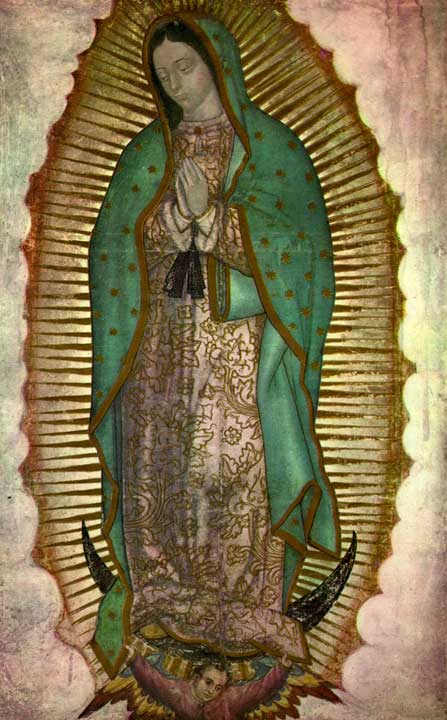
Lady of Guadalupe — Presentation Transcript
1. Discoveries about the tilma of the Virgin of Guadalupe Empress of America Andre Fernando Garcia click anywhere on page to continue
2. Would you like to read something that will not only surprise you, but change your way of thinking forever? Then, read what science has discovered about the tilma of the Virgin of Guadalupe:
3. 1. Ophthalmalgic studies made on the eyes of Mary detected that when the eye is exposed to light, the retina contracts, and when the light is withdrawn, it returns to a dilated state, just as happens with a living eye.
4. 2. The temperature of Juan Diego’s tilma, made of a material that comes from fibers of the maguey cactus, maintains a constant temperature of 98.6 degrees, the same as that of a living human body.
5. 3. One of the doctors who analyzed the tilma placed his stethoscope below the black band at Mary’s waist, and heard rhythmic beats at 115 pulses per minute, the same as that of a baby in the maternal womb.
6. 4. No sign of paint has been discovered on the tilma. From a distance of 3-4 inches from the image, one can see only the maguey cactus fibers of the material: the colors disappear. Scientific studies have not been able to discover the origin of the coloration, nor the way the image was painted. They cannot detect vestiges of brush strokes or any other known painting technique. NASA scientists confirm that the paint material does not belong to any known element on earth.
7. 5. When the material was examined under a laser ray, it was shown that there is no coloration on the front or the back of the cloth, and that the colors hover at a distance of 3/10 th of a millimeter (1/100 th of an inch) over the cloth, without touching it. The colors actually float above the surface of the tilma. Isn’t that amazing?
8. 6. The rough material of the tilma has a lifespan of no more than 20-30 years. Several centuries ago, a replica of the image was painted on an identical piece of maguey cloth, and it disintegrated after several decades. Nonetheless, during the almost 500 years of the miracle, the cloth with the image of Mary remains as strong as it was on the first day. Science cannot explain why the material has not disintegrated.
9. 7. In the year 1791, muriatic acid accidentally spilled on the upper right side of the tilma. During the period of 30 days, without any special treatment, the affected fabric re-constituted itself miraculously.
10. 8. The stars that appear on the Mantle of Mary reflect the exact configuration and positions that could be seen in the sky of Mexico on the day the miracle happened.
11. On the right side of the Virgin’s mantle, the southern constellations are indicated: At the top are four stars that form part of the Orphiuchus constellation. Below it to the left, one finds Libra , and to its right, at what seems an arrow point, is the beginning of Scorpio. In the middle are the constellations of Lupus and to its left, an end point of Hydra . Further down, one can clearly see the Southern Cross ; above it appears the slightly inclined square of the Centaurus constellation.
12. On the left side of the Virgin’s mantle one sees the northern constellations: At her shoulder, a fragment of the stars of the Herdsman constellation; below it and to the left is the Great Bear . To its right is Berenice’s Hair ; below it, Hunting Dogs , and to its left, the Thuban , which is the brightest star of the Draco constellation. Below the two parallel stars (which still form part of the Big Bear), one finds stars from another pair of constellations: the Auriga and at the bottom, three stars of Taurus . Thus, in their totality and proper places, the 46 most brilliant stars that can be seen on the horizon of the Valley of Mexico are identified.
13. 9. In the year 1921, a man concealed a high power bomb in a flower arrangement, and placed it at the feet of the tilma. The explosion destroyed everything around it, except for the tilma, which remained intact.
14. 10. Scientists discovered that the eyes of Mary have the three refractive characteristics of a human eye.
15. 11. In the eyes of Mary (only about 1/3 rd inch in size), miniscule human figures were discovered that no artist could have painted. The same scene is repeated in each eye. Using digital technology, the images in the eyes were enlarged many times, revealing that each eye reflected the figure of the Indian Juan Diego opening his tilma in front of Bishop Zumarraga. Do you know the size of this scene? One fourth of a millimeter (1/100 th of an inch).
16. It is evident that all these unexplainable things were given to us for a reason: To catch our attention. Have they caught yours?
17. To close, let us look at three surprising facts: 1. In the Indian language, “Guadalupe” means to “crush the head of the serpent.†It properly refers to Genesis 3:15: Mary, the conqueror of evil. 2. The image also depicts a detail from Apocalypse 12: “And a great sign appeared in Heaven: A woman clothed with the sun and the moon under her feet.†3. The Virgin wears a black band at her waist, which symbolizes pregnancy, to indicate that God wanted Jesus to be born in the three Americas, in the heart of each American. “ While I live I will praise the Lord: I will sing praise unto my God while I have any being†(Ps 146:2).
18. This presentation has the single purpose of demonstrating to you that the Virgin will be with you always, whenever you need her, that she will never abandon you, and that you will always be her special son or daughter. Never forget the words she spoke to Juan Diego : My little child, the smallest of all, let nothing afflict you. Do you not know that you are in my lap? Am I not here, I, who am your mother?
Tags: Guadalupe Presentation Transcript, Indian Juan Diego, mexico, mother, NASA, our lady of guadalupe, science
This entry was posted on Thursday, December 12th, 2013 at 1:45 am
You can follow any responses to this entry through the RSS 2.0 feed.
Dr. Matthew Bunson discusses the life, times and teachings of St. Augustine of Hippo (part 2)
[powerpress]
Augustine of Hippo [
-Â Confessions
-Â Letters
-Â City of God
-Â Christian Doctrine
-Â On the Holy Trinity
-Â The Enchiridion
-Â On the Catechising of the Uninstructed
-Â On Faith and the Creed
-Â Concerning Faith of Things Not Seen
-Â On the Profit of Believing
-Â On the Creed: A Sermon to Catechumens
-Â On Continence
-Â On the Good of Marriage
-Â On Holy Virginity
-Â On the Good of Widowhood
-Â On Lying
-Â To Consentius: Against Lying
-Â On the Work of Monks
-Â On Patience
-Â On Care to be Had For the Dead
-Â On the Morals of the Catholic Church
-Â On the Morals of the Manichaeans
-Â On Two Souls, Against the Manichaeans
-Â Acts or Disputation Against Fortunatus the Manichaean
-Â Against the Epistle of Manichaeus Called Fundamental
-Â Reply to Faustus the Manichaean
-Â Concerning the Nature of Good, Against the Manichaeans
-Â On Baptism, Against the Donatists
-Â Answer to Letters of Petilian, Bishop of Cirta
-Â Merits and Remission of Sin, and Infant Baptism
-Â On the Spirit and the Letter
-Â On Nature and Grace
-Â On Man’s Perfection in Righteousness
-Â On the Proceedings of Pelagius
-Â On the Grace of Christ, and on Original Sin
-Â On Marriage and Concupiscence
-Â On the Soul and its Origin
-Â Against Two Letters of the Pelagians
-Â On Grace and Free Will
-Â On Rebuke and Grace
-Â The Predestination of the Saints/Gift of Perseverance
-Â Our Lord’s Sermon on the Mount
-Â The Harmony of the Gospels
-Â Sermons on Selected Lessons of the New Testament
-Â Tractates on the Gospel of John
-Â Homilies on the First Epistle of John
-Â Soliloquies
-Â The Enarrations, or Expositions, on the Psalms
After his Baptism, Augustine decided to return to Africa with his friends, with the idea of living a community life of the monastic kind at the service of God. However, while awaiting their departure in Ostia, his mother fell ill unexpectedly and died shortly afterwards, breaking her son’s heart. Having returned to his
homeland at last, the convert settled in Hippo for the very purpose of founding a monastery. In this city on the African coast he was ordained a priest in 391, despite his reticence, and with a few companions began the monastic life which had long been in his mind, dividing his time between prayer, study and preaching. All he wanted was to be at the service of the truth. He did not feel he had a vocation to pastoral life but realized later that God was calling him to be a pastor among others and thus to offer people the gift of the truth. He was ordained a Bishop in Hippo four years later, in 395. Augustine continued to deepen his study of Scripture and of the texts of the Christian tradition and was an exemplary Bishop in his tireless pastoral commitment: he preached several times a week to his faithful, supported the poor and orphans, supervised the formation of the clergy and the organization of mens’ and womens’ monasteries. In short, the former rhetorician asserted himself as one of the most important exponents of Christianity of that time. He was very active in the government of his Diocese – with remarkable, even civil, implications – in the more than 35 years of his Episcopate, and the Bishop of Hippo actually exercised a vast influence in his guidance of the Catholic Church in Roman Africa and, more generally, in the Christianity of his time, coping with religious tendencies and tenacious, disruptive heresies such as Manichaeism, Donatism and Pelagianism, which endangered the Christian faith in the one God, rich in mercy.
And Augustine entrusted himself to God every day until the very end of his life: smitten by fever, while for almost three months his Hippo was being besieged by vandal invaders, the Bishop – his friend Possidius recounts in his Vita Augustini - asked that the penitential psalms be transcribed in large characters, “and that the sheets be attached to the wall, so that while he was bedridden during his illness he could see and read them and he shed constant hot tears” (31, 2). This is how Augustine spent the last days of his life. He died on 28 August 430, when he was not yet 76. We will devote our next encounters to his work, his message and his inner experience.
For more visit Vatican.va
Dr. Matthew Bunson, Senior Fellow of the St. Paul Center for Biblical Theology, is one of the United States’ leading authorities on the papacy and the Church.
His books include: The Encyclopedia of Catholic History; The Encyclopedia of Saints; Papal Wisdom; All Shall Be Well; Encyclopedia of the Roman Empire; and The Angelic Doctor: The Life and World of St. Thomas Aquinas; The Pope Encyclopedia; We Have a Pope! Benedict XVI, the first Catholic biography of the Holy Father in the English language; the Encyclopedia of U.S. Catholic History; Pope Francis. His also the editor of OSV’s “The Catholic Answer” magazine.
Tags: beauty, Church, matthew bunson, mother, old testament, truth
This entry was posted on Monday, November 18th, 2013 at 3:17 pm
You can follow any responses to this entry through the RSS 2.0 feed.
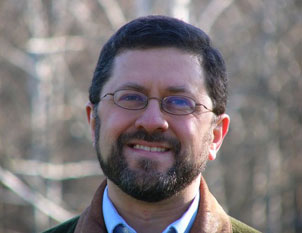 Mike Aquilina shares with Bruce and I the life and teaches of St. John Chrysostom.
Mike Aquilina shares with Bruce and I the life and teaches of St. John Chrysostom.
[powerpress]
John Chrysostom born in 347, his father died soon after his birth, leaving his mother,  Anthusa, a widow at the age of 20.  She never married, sticking with the teachings of St. Paul to stay unmarried; she was a devout Christian and was very committed to her son; they loved and cared for each other very much. She would raise up a son who had a great love for Jesus Christ and who would become of the greatest preachers of all time (imagine him the Billy Graham of his day). He would become the Archbishop of Constantinople, and an important Early Church Father. His denunciation of abuse of authority by both ecclesiastical and political leaders would get him in big trouble, but it didn’t stop him. After his death (or, according to some sources, during his life) he was given the Greek surname chrysostomos, meaning “golden mouthed”, rendered in English as Chrysostom.
Many Christian Churches love and claim St. John Chrysostom. The Orthodox and Eastern Catholic Churches honor him as a saint and count him among the Three Holy Hierarchs, together with Saints Basil the Great and Gregory Nazianzus. He is recognized by the Eastern Orthodox Church and Roman Catholic Church as a saint and Doctor of the Church. Churches of the Western tradition, including the Roman Catholic Church, some Anglican provinces, and parts of the Lutheran Church, commemorate him on 13 September. Some Lutheran and many Anglican provinces commemorate him on the traditional Eastern feast day of 27 January. The Coptic Orthodox Church of Alexandria recognizes John Chrysostom as a saint.
Spiritual Writings:
 - Homilies on the Gospel of St. Matthew
-Â Homilies on Acts
-Â Homilies on Romans
-Â Homilies on First Corinthians
-Â Homilies on Second Corinthians
-Â Homilies on Ephesians
-Â Homilies on Philippians
-Â Homilies on Colossians
-Â Homilies on First Thessalonians
-Â Homilies on Second Thessalonians
-Â Homilies on First Timothy
-Â Homilies on Second Timothy
-Â Homilies on Titus
-Â Homilies on Philemon
-Â Commentary on Galatians
-Â Homilies on the Gospel of John
-Â Homilies on the Epistle to the Hebrews
-Â Homilies on the Statues
-Â No One Can Harm the Man Who Does Not Injure Himself
-Â Two Letters to Theodore After His Fall
-Â Letter to a Young Widow
-Â Homily on St. Ignatius
-Â Homily on St. Babylas
-Â Homily Concerning “Lowliness of Mind”
-Â Instructions to Catechumens
-Â Three Homilies on the Power of Satan
-Â Homily on the Passage “Father, if it be possible . . .”
-Â Homily on the Paralytic Lowered Through the Roof
-Â Homily on the Passage “If your enemy hunger, feed him.”
-Â Homily Against Publishing the Errors of the Brethren
-Â First Homily on Eutropius
-Â Second Homily on Eutropius (After His Captivity)
-Â Four Letters to Olympias
-Â Letter to Some Priests of Antioch
-Â Correspondence with Pope Innocent I
-Â On the Priesthood.
.
Prayer is the light of the soul
A reading from the homilies of St John Chrysostom (Hom 6 on Prayer)
“There is nothing more worthwhile than to pray to God and to converse with him, for prayer unites us with God as his companions. As our bodily eyes are illuminated by seeing the light, so in contemplating God our soul is illuminated by him. Of course the prayer I have in mind is no matter of routine, it is deliberate and earnest. It is not tied down to a fixed timetable; rather it is a state which endures by night and day.
Our soul should be directed in God, not merely when we suddenly think of prayer, but even when we are concerned with something else. If we are looking after the poor, if we are busy in some other way, or if we are doing any type of good work, we should season our actions with the desire and the remembrance of God. Through this salt of the love of God we can all become a sweet dish for the Lord. If we are generous in giving time to prayer, we will experience its benefits throughout our life.
Prayer is the light of the soul, giving us true knowledge of God. It is a link mediating between God and man. By prayer the soul is borne up to heaven and in a marvellous way embraces the Lord. This meeting is like that of an infant crying on its mother, and seeking the best of milk. The soul longs for its own needs and what it receives is better than anything to be seen in the world.
Prayer is a precious way of communicating with God, it gladdens the soul and gives repose to its affections. You should not think of prayer as being a matter of words. It is a desire for God, an indescribable devotion, not of human origin, but the gift of God’s grace. As Saint Paul says: we do not know how to pray as we ought, but the Spirit himself intercedes for us with sighs too deep for words.
Anyone who receives from the Lord the gift of this type of prayer possesses a richness that is not to be taken from him, a heavenly food filling up the soul. Once he has tasted this food, he is set alight by an eternal desire for the Lord, the fiercest of fires lighting up his soul.
To set about this prayer, paint the house of your soul with modesty and lowliness and make it splendid with the light of justice. Adorn it with the beaten gold of good works and, for walls and stones, embellish it assiduously with faith and generosity. Above all, place prayer on top of this house as its roof so that the complete building may be ready for the Lord. Thus he will be received in a splendid royal house and by grace his image will already be settled in your soul.
Â
Tags: doctor of the church, eastern catholic churches, father of the church, fathers mike, heaven, John Chrysostom, mike aquilina, mother, prayer, st john chrysostom
This entry was posted on Friday, September 13th, 2013 at 7:12 am
You can follow any responses to this entry through the RSS 2.0 feed.
Mary Our Mother
[powerpress]
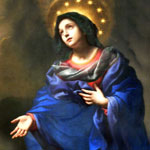 On this faith check let’s talk about why Catholics believe the Virgin Mary is not just Jesus’ mother, but our mother too.
On this faith check let’s talk about why Catholics believe the Virgin Mary is not just Jesus’ mother, but our mother too.
It was during the crucifixion in St. John 19 that Our Lord looked down at Mary and the apostle John at the foot of the cross and said to Mary, “Woman behold your son,†and to John, “Behold your mother.â€Â 1
Bear in mind here that Jesus is suffering the pains of the cross—He must be doing something bigger than simply asking John to watch after his Mother.  John here is a representative of all of Jesus’ followers, and Jesus is giving his mother to all of us.
In Revelation 12 John describes his vision of a “woman clothed with the sun,†2 who brings forth a male child to rule the nations and defeat the ancient dragon who is the devil.  Verse 17 says that the offspring of this woman are those who keep God’s commandments and bear testimony to Jesus.
Friends, God has given us Mary, the Woman chosen from all eternity, 3 to be our spiritual mother and draw us closer to her son, our Lord Jesus Christ.
1Â -Â Â Jn. 19:26-27
2Â -Â Â Rev. 12:1
3Â -Â Â cf. Gen. 3:15, Is. 7:14; Jer. 31:22, etc.
Tags: catholic apologetics, faith, Jesus, Lord Jesus Christ, mother
This entry was posted on Monday, August 5th, 2013 at 7:49 am
You can follow any responses to this entry through the RSS 2.0 feed.
Mark breaks open The TEN COMMANDMENTS–
The Fourth Commandment:
Honor your father and your mother, that your days may be
long in the land which the Lord your God gives you.
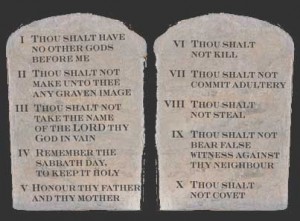
[powerpress]
Mark Hart is an author, speaker, director and teacher, Mark’s work both written and spoken, is known across the country and world. While he serves as the Vice President of LIFE TEEN, he is known to tens of thousands simply as the “Bible Geek ®†Mark passionately echoes the gospel to all he encounters. He is as deep as he is funny, and his love for his wife and daughters is second only to his immense love for Jesus Christ.
Visit Mark at www.lifeteen.com
Tags: father, love, mark hart, mother
This entry was posted on Wednesday, January 2nd, 2013 at 6:02 am
You can follow any responses to this entry through the RSS 2.0 feed.
[powerpress]
O God,
who by the Immaculate Conception
of the Blessed Virgin Mary,
did prepare a worthy dwelling place for Your Son,
we beseech You that,
as by the foreseen death of this, Your Son,
You did preserve Her from all stain,
so too You would permit us,
purified through Her intercession,
to come unto You.
Through the same Lord Jesus Christ,
Your Son, who lives and reigns with You
in the unity of the Holy Spirit,
God, world without end.
Amen.
O Mary, Mother of God,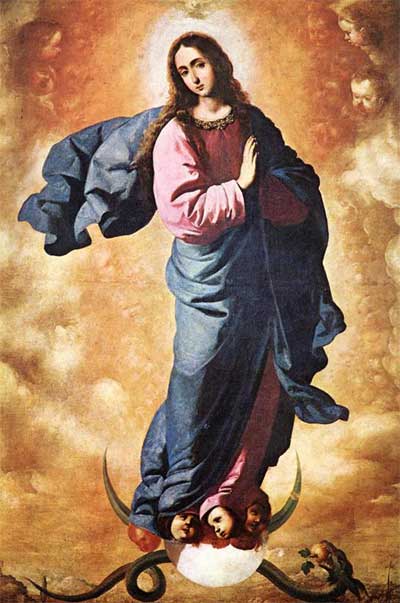
endowed in your glorious Immaculate Conception
with the fullness of grace;
unique among women
in that you are both mother and virgin;
Mother of Christ and Virgin of Christ,
we ask you to look down with a tender heart
from your throne and listen to our prayers
as we earnestly ask that you obtain for us
the favor for which we now plead…
(State your intention here…)
O Mary of the Immaculate Conception,
Mother of Christ,
you had influence with your Divine Son while upon this earth;
you have the same influence now in heaven.
Pray for us
and obtain for us from him
the granting of my petition if it be the Divine Will.
Amen.
For the complete 9 day novena visit the Discerning Hearts:
The Immaculate Conception Novena page
Tags: immaculate conception, mother, prayers, women
This entry was posted on Sunday, December 2nd, 2012 at 12:18 am
You can follow any responses to this entry through the RSS 2.0 feed.
I LOVE it…the birthday of the mother of all “moms”! Happy Birthday to the dearest Mother of all. The Church celebrates 3 birthdays on the calendar…Jesus, John the Baptist, and the great Mother of God, Mary Most Holy. We celebrate the day the Immaculate Conception was brought through birth into the world.  Â
From The Catholic News Agency –
“The Catholic Church will soon celebrate the birth of the Blessed Virgin Mary on its traditional fixed date of September 8, nine months after the December 8 celebration of her Immaculate Conception as the child of Saints Joachim and Anna.
The circumstances of the Virgin Mary’s infancy and early life are not directly recorded in the Bible, but other documents and traditions describing the circumstances of her birth are cited by some of the earliest Christian writers from the first centuries of the Church.
These accounts, although not considered authoritative in the same manner as the Bible, outline some of the Church’s traditional beliefs about the birth of Mary.
The “Protoevangelium of James,†which was probably put into its final written form in the early second century, describes Mary’s father Joachim as a wealthy member of one of the Twelve Tribes of Israel. Joachim was deeply grieved, along with his wife Anna, by their childlessness. “He called to mind Abraham,†the early Christian writing says, “that in the last day God gave him a son Isaac.â€
Joachim and Anna began to devote themselves extensively and rigorously to prayer and fasting, initially wondering whether their inability to conceive a child might signify God’s displeasure with them.
As it turned out, however, the couple were to be blessed even more abundantly than Abraham and Sarah, as an angel revealed to Anna when he appeared to her and prophesied that all generations would honor their future child: “The Lord has heard your prayer, and you shall conceive, and shall bring forth; and your seed shall be spoken of in all the world.â€
After Mary’s birth, according to the Protoevangelium of James, Anna “made a sanctuary†in the infant girl’s room, and “allowed nothing common or unclean†on account of the special holiness of the child. The same writing records that when she was one year old, her father “made a great feast, and invited the priests, and the scribes, and the elders, and all the people of Israel.â€
“And Joachim brought the child to the priests,†the account continues, “and they blessed her, saying: ‘O God of our fathers, bless this child, and give her an everlasting name to be named in all generations’ . . . And he brought her to the chief priests; and they blessed her, saying: ‘O God most high, look upon this child, and bless her with the utmost blessing, which shall be for ever.’â€
The protoevangelium goes on to describe how Mary’s parents, along with the temple priests, subsequently decided that she would be offered to God as a consecrated Virgin for the rest of her life, and enter a chaste marriage with the carpenter Joseph.
Saint Augustine described the birth of the Blessed Virgin Mary as an event of cosmic and historic significance, and an appropriate prelude to the birth of Jesus Christ. “She is the flower of the field from whom bloomed the precious lily of the valley,†he said.
The fourth-century bishop, whose theology profoundly shaped the Western Church’s understanding of sin and human nature, affirmed that “through her birth, the nature inherited from our first parents is changed.” – CNA
Tags: birth of the blessed virgin mary, blessed virgin mary, happy birthday, immaculate conception, Jesus, mary our mother, mother, mother of god, nativity of the blessed virgin mary, protoevangelium of james
This entry was posted on Saturday, September 8th, 2012 at 12:59 am
You can follow any responses to this entry through the RSS 2.0 feed.
[powerpress]
From a letter to Ermentrude of Bruges
O dearest, look on heaven that invites us, and bear the cross and follow Christ who preceded us; indeed, after various and many tribulations we shall enter through him into his glory. Love with your whole heart God and Jesus, his son, crucified for our sins, and never let his memory escape your mind; make yourself mediate continually on the mysteries of the cross and the anguish of the mother standing beneath the cross.
Dear St. Clare,
As a young girl you imitated your mother’s love for the poor of your native Assisi.
Inspired by the preaching of St. Francis, who sang enthusiastically of His Lord Jesus and Lady Poverty, you gave your life to Jesus at nineteen years of age, allowing St. Francis to cut off your beautiful hair and invest you with the Franciscan habit.
All through your life you offered your great suffering for your Sisters, the Poor Clares, and the conversion of souls. You greatly aided St. Francis with his new order, carrying on his spirit in the Franciscans after his death.
Most of all you had a deep love of Jesus in the Most Blessed Sacrament, which fueled your vocation to love and care for the poor.
Please pray for me (mention your request) that I will seek to keep Jesus as my first love, as you did. Help me to grow in love of the Blessed Sacrament, to care for the poor, and to offer my whole life to God.
Heavenly Father, thank You for the gift of St. Clare. Through her intercession, please hear and answer my prayer, in the name of Jesus Your Son.
Amen.
For the complete novena visit the St. Clare Novena Discerning Hearts Page
Tags: Jesus, love, mother, st. clare novena, the cross
This entry was posted on Monday, August 6th, 2012 at 5:28 am
You can follow any responses to this entry through the RSS 2.0 feed.
A Queen of Scotland!
Margaret was born c. 1045 and was the niece of King Edward the Confessor of England. She was raised in Hungary and lived with her exiled father, Edward Atheling, her mother, Agatha, her brother, Edgar, and her sister, Christian. They returned to England in 1054. Early chronicles tell us that she read the scriptures in Latin, learned French and was trained in English needlework.
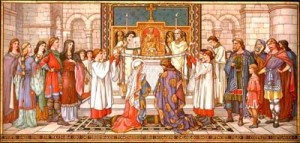 Marriage of St Margaret
Marriage of St MargaretMargaret married Malcolm III ‘Canmore’ of Scotland in c.1070. Margaret would have been about 24 years of age and Malcolm about 47. Ancient chronicles tell us that Margaret was more prepared for the cloister than the crown. However, Malcolm won her over and they were married in Dunfermline, then the seat of the Scottish kings.
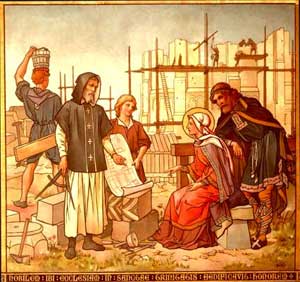
Margaret had a significant influence on early Scotland. Although she was a patron of the existing celtic church, she also introduced to Scotland the Benedictines from Canterbury and had the Priory Church built which would eventually become Dunfermline Abbey. Margaret also had a chapel built at Edinburgh Castle and the church at Iona rebuilt after Viking attacks.
Washing the feet of the poor
Margaret was very pious and carried out many works of charity. She visited and cared for the sick and had hostels built for the poor. It was her custom that the poor should visit her every morning and be seated around her to receive alms. (more…)
Tags: benedictine, catholic, catholic podcast, catholic prayer, cathollc spirituality, celtic church, england, Malcolm III, mother, scotland, st margaret, St Margaret Margaret, St. Margaret of Scotland, women of the middle ages
This entry was posted on Wednesday, November 16th, 2011 at 12:04 am
You can follow any responses to this entry through the RSS 2.0 feed.
Mother of those who place their hope in Solidarity, pray for us.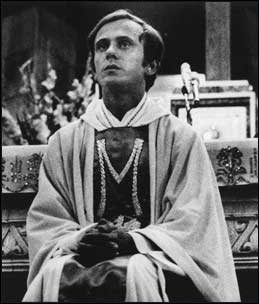
Mother of those who are deceived, pray for us.
Mother of those who are betrayed, pray for us.
Mother of those who are arrested in the night, pray for us.
Mother of those who are imprisoned, pray for us.
Mother of those who suffer from the cold, pray for us.
Mother of those who have been frightened, pray for us.
Mother of those who were subjected to interrogations, pray for us.
Mother of those innocents who have been condemned, pray for us.
Mother of those who speak the truth, pray for us.
Mother of those who cannot be corrupted, pray for us.
Mother of those who resist, pray for us.
Mother of orphans, pray for us.
Mother of those who have been molested because they wore your image, pray for us.
Mother of those who are forced to sign declarations contrary to their conscience, pray for us.
Mother of mothers who weep, pray for us.
Mother of fathers who have been so deeply saddened, pray for us.
Mother of our suffering country _____, pray for us.
Mother of our faithful country _____, pray for us.
We beg you, O mother in whom resides the hope of millions of people, grant us to live in liberty and in truth, in fidelity to you and to your Son. Amen.
Tags: blessed mother, blessed virgin mary, catholic, catholic podcast, catholic prayer, cathollc spirituality, hope, liberty, mother, prayer, suffering, truth
This entry was posted on Wednesday, October 19th, 2011 at 6:00 am
You can follow any responses to this entry through the RSS 2.0 feed.
 Episode 1 -Baptism: Born from Above– The significance of Jesus’ baptism.  The ministry of parenthood.  The role of the father.
Episode 1 -Baptism: Born from Above– The significance of Jesus’ baptism.  The ministry of parenthood.  The role of the father.
[powerpress]
Deacon James Keating, PhD, the director of Theological Formation for the Institute for Priestly Formation, located at Creighton University, in Omaha, Nebraska.
Deacon Keating takes a careful look at the Baptismal Rite and offers prayerful reflection and insight to help us live out the faith and nurture the domestic church.
From the Baptismal Rite for Children:
From the earliest times, the Church, to which the mission of preaching the Gospel and of baptizing was entrusted, has baptized not only adults but children as well. Our Lord said:
‘Unless a man is reborn in water and the Holy Spirit, he cannot enter the kingdom of
God.’ The Church has always understood these words to mean that children should not
be deprived of baptism, because they are baptized in the faith of the Church, a faith proclaimedfor them by their parents and godparents, who represent both the local Church
and the whole society of saints and believers: ‘The whole Church is the mother of all and the mother of each.’ To fulfill the true meaning of the sacrament, children must later be formed in the faith in
which they have been baptized. The foundation of this formation will be the sacrament
itself that they have already received. Christian formation, which is their due, seeks to lead
them gradually to learn God’s plan in Christ, so that they may ultimately accept for themselvesthe faith in which they have been baptized.
How can this be accomplished? Â What is the role of the parents, the godparents, the minister of baptism, the Church? These and other questions are reflected upon in “Baptism: Born from Above with Deacon James Keating”.
For more information on the “Institute of Priestly Formation†and for other material available by Deacon Keating, just click here
Don’t forget to pickup a copy of “Communion with Christ†, it is one of the best audio sets on prayer…ever!
Check out Deacon Keating’s “Discerning Heart†page
Tags: baptism, baptismal rite, catholic, catholic podcast, catholic prayer, cathollc spirituality, creighton university, Deacon James Keating, Deacon Keating, father, institute for priestly formation, mother
This entry was posted on Friday, July 22nd, 2011 at 6:56 am
You can follow any responses to this entry through the RSS 2.0 feed.
“Why is this granted me, that the mother of my Lord should come to me?”
[powerpress feed=”daily-scripture”]
an excerpt from today’s reflection by Don Schwager:
Do you recognize the indwelling presence of the Lord Jesus in your life? Blessed are you if you see and recognize the Lord with the “eyes of faith”. The word “blessed” [makarios in Greek] literally means “happiness” or “beatitude”. It describes a kind of joy which is serene and untouchable, self-contained, and independent from chance and changing circumstances of life. There is a certain paradox for those “blessed” by the Lord. Mary was given the “blessedness” of being the mother of the Son of God. That blessedness also would become a sword which pierced her heart as her Son died upon the cross. Anselm, a great teacher and Archbishop of Canterberry (1033-1109), spoke these words in a homily: “Without God’s Son nothing could exist; without Mary’s son, nothing could be redeemed.” To be chosen by God is an awesome privilege and responsibility. Mary received both a crown of joy and a cross of sorrow. Her joy was not diminished by her sorrow because it  was fueled by her faith, hope, and trust in God and his promises. Jesus promised his disciples that “no one will take your joy from you” (John 16:22). The Lord gives us a supernatural joy which enables us to bear any sorrow or pain and which neither life nor death can take away. Do you know the joy of a life given over to God in faith and trust?
was fueled by her faith, hope, and trust in God and his promises. Jesus promised his disciples that “no one will take your joy from you” (John 16:22). The Lord gives us a supernatural joy which enables us to bear any sorrow or pain and which neither life nor death can take away. Do you know the joy of a life given over to God in faith and trust?
What is the significance of Mary’s visit to her cousin Elizabeth before the birth of Jesus? When Elizabeth greeted Mary and recognized the Messiah in Mary’s womb they were filled with the Holy Spirit and with a joyful anticipation of the fulfilment of God’s promise to give a Savior. What a marvelous wonder for God to fill not only Elizabeth’s heart with his Holy Spirit but the child in her womb as well. John the Baptist, even before the birth of the Messiah, pointed to his coming and leapt for joy in the womb of his mother as the Holy Spirit revealed to him the presence of the King to be born. The Holy Spirit is God’s gift to us to enable us to know and experience the indwelling presence of God and the power of his kingdom. The Holy Spirit is the way in which God reigns within each of us. Do you live in the joy and knowledge of God’s indwelling presence with you through his Holy Spirit?
“Lord Jesus, fill me with your Holy Spirit and give me joy in seeking you more closely. Increase my faith in all your promises, my hope in the joys of heaven, and my love for You as my All.”
for the full reflection visit : Daily Reading and Meditation
Tags: catholic, catholic podcast, catholic prayer, cathollc spirituality, don schwager, faith, gospel of luke, holy spirit, joy, mother
This entry was posted on Tuesday, May 31st, 2011 at 12:29 am
You can follow any responses to this entry through the RSS 2.0 feed.


